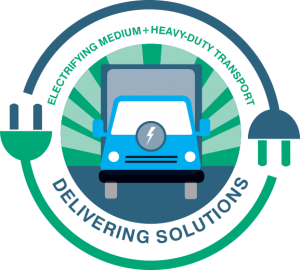 This post is the first in our Innovation Series
This post is the first in our Innovation Series
One of the largest sources of climate pollution is the transportation sector, which is responsible for about a quarter of our nation’s greenhouse gas pollution. It is clear that to reach our climate goals, we must reduce car and truck emissions.
One way to reduce harmful air and climate pollution is by electrifying the transportation sector, especially long-haul trucks, buses, delivery vehicles, garbage trucks and regional “day cab” tractors used at ports. Heavy-duty vehicles are not only responsible for significant climate pollution, they are also responsible for about 30% of Nitrogen oxide pollution. These emissions can increase cancer risk, neurological and metabolic diseases, and cause respiratory and cardiovascular damage.
Toxic air pollutants like these are often hyper-localized, disproportionately impacting low-income communities and communities of color who are more likely to live near major highways, ports, and distribution centers. A recent EDF study of Oakland’s air pollution, for example, observed residents living near one particular freeway (home to much of the city’s diesel fueled traffic) were exposed to concentrations of black carbon 80% higher than a similar road.
Electrifying these medium and heavy-duty vehicles therefore reduces both pollution that harms human health and reduces greenhouse gas emissions from the combustion of the fuel. But making this win-win transition will require significant technological and political support to succeed. Fortunately, a growing number of innovators are adopting and/or developing tools to expand the number of medium- and heavy-duty electric vehicles on the road — ultimately reducing harmful pollution and preserving a clean, reliable and equitable electric grid.
Read More »
 This post is the second in our Innovation Series
This post is the second in our Innovation Series








